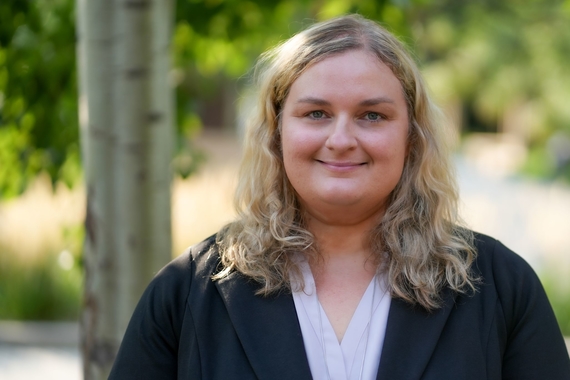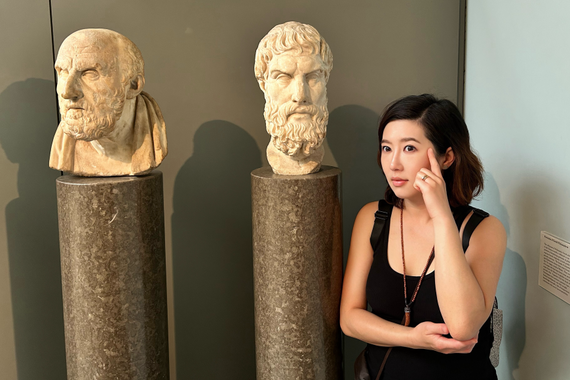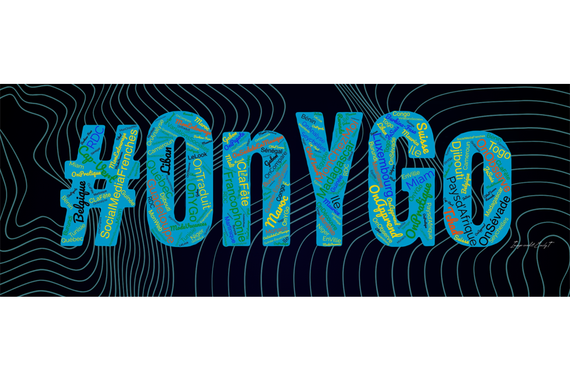Class-to-Class Exchanges in 1995 and Today
For those of us who have been teaching for a while, it sometimes feels like we are “re-creating the wheel” every few years. New textbooks, new pedagogical frameworks, and new technologies appear and we adapt our teaching techniques accordingly. At the core of what we do, however, much has remained the same. For example, one goal that has guided teachers for decades, is seeking to provide students the opportunity to converse with native speakers and to exchange cultural information. In 2019, the Language Center’s TandemPlus program assists both students and instructors to establish those opportunities for conversation. TandemPlus offers a well-established structure to pair U of M students either with an on-campus partner or with a remote partner through online video-conferencing, and supports instructors who wish to design class assignments based on the conversation exchanges. Back in 1995, there were teachers here on campus trying to do the same thing (see the archived Elsie Speaks article below); the primary difference between then and now is the availability of tools and what those tools enabled users to do. Today we turn to Zoom and Skype for synchronous video-conferences with international partners; in 1995, asynchronous, written email was the quickest means to connect. What has remained the same, however, is the quest of passionate instructors to develop innovative, forward-looking language-learning activities, and the excitement of learners when they communicate and connect with real people.
We hope you enjoy reading these excerpts from an old Elsie Speaks article, originally published in winter 1995. Perhaps it will remind you of your own language learning and teaching journey, and inspire you to explore uncharted territory. As always, the Language Center is here to help you.
ELSIE SPEAKS - Winter 1995
Teachers Boot Students into Target Language Cyberspace
ELSIE gives special recognition to two instructors for their innovative use of computing technology in their language classes. To their credit, they have boldly gone where few have gone before. Brief interviews with Karen Lybeck (Norwegian) and Karen Lusnia (French) revealed the scope of their computer-assisted ventures. . . .
Lamenting the fact that her class met only three times a week, Karen wanted her students to have more contact with Norwegian. She also hoped to promote informal writing outside of class. To meet these goals, she designed a three-pronged attack for propelling her 12 Norwegian 1105 students into cyberspace.
First, she arranged with an English instructor at a Norwegian teachers college to have their students exchange letters. Since the students in Norway are only gradually establishing e-mail accounts, the exchange was begun by letter mail. The first of two letter exchanges for Winter Quarter is underway, with the Norwegian students having just received missives from Karen's students. (An irony of living in the age of mixed mail: Karen and her Norwegian colleague correspond daily by e-mail to confirm the departure and arrival dates of the students' snail mail letters!) Karen expects to have the same students back for Spring Quarter,and they will continue their correspondence using e-mail.
English ain't so eazy, either
Karen's students are writing in Norwegian,and the Norwegian students are writing in English. "I think it will be fun for the students to do a little error analysis," adds Karen. "They'll get to see what the students on the other end are having problems with. We'll get some empathy going-they'll see that English isn't so easy to learn either!" Both groups of students are diverse in terms of age and life experiences, so Karen hopes the cultural exchange will be rich and varied. Had she considered having each set of students write letters in the native language? "That might be a good idea for later letters, when the students want to address abstract subjects, or go into great detail on a specific topic. But I think the first letters are best written in the target language. There the students are doing introductions and writing about self. That's what they're best at." . . .
Excitement
Are her students excited by the electronic projects? "Yes! I have already had two or three people saying, 'Thanks for making me learn this,because I've known I should learn this, but I've been afraid, or putting it off."' Any negative responses? "Yes, one. A student sent me a message saying, 'Now you've got me doing something I'm not very good at, and I don't feel comfortable.' But that's OK. You can't stay away from a computer forever, especially out in the workplace."
Evaluation
In terms of evaluating her students' performance, the two letter exchanges of this quarter are designed as process writing assignments, with evaluation of both process and product. Once the students begin e-mail correspondence, Karen is hesitant to grade anything other than whether the students have exchanged messages. "The students could mail me a copy of each message they send, and I could comment on interesting content. But at the same time, I am reluctant to do that, because I want the students to get a relationship going, and if they want to talk about their terrible Norwegian teacher, they should be free to do that! Maybe the students would have to send me a copy of only a couple messages that they themselves select from their correspondence. "
Integrating into the curriculum
Karen wants to have the e-mail project integrated into the required curriculum of her class, for "students generally don't extend themselves beyond what they are required to do, because they are pulled in so many different directions already. I'd rather make room for it inmy syllabus by doing less of something else." For Karen, the e-mail project is an experiment, and she realizes that the future will likely bring both pleasant surprises and unforeseen challenges. "We're just getting started-it will be interesting to see how it goes. It's been something I've wanted to try for a while, ever since I was in Norway and first learned e-mail. With e-mail we're all so close now."


